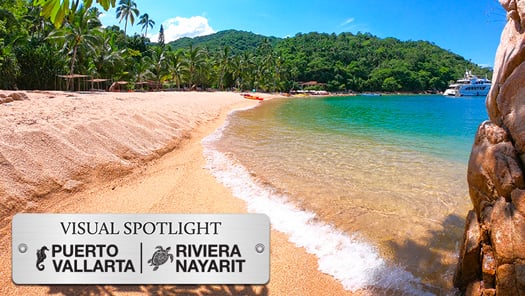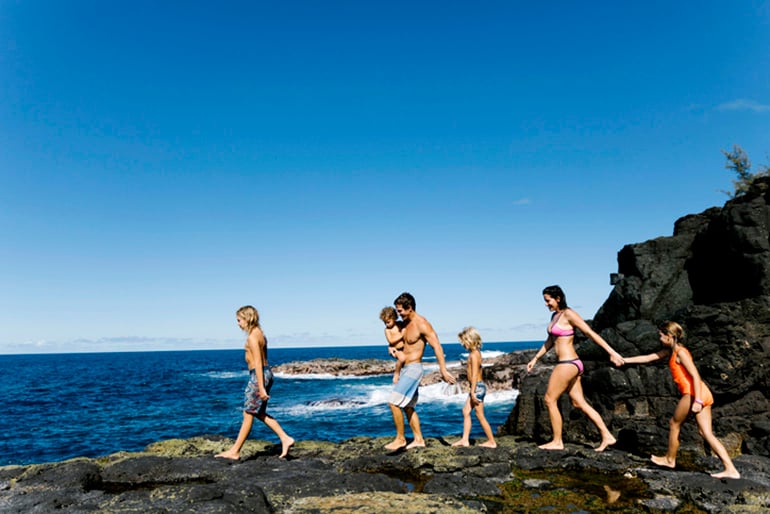Setting the spotlight on Puerto Vallarta, a perfect road-less-travelled but well-beloved destination for beach-goers.
Once upon a time, when it came to travel, top-of-mind makes a destination a top choice. But our world has changed, leading travelers to seek refuge in retreats distanced from others and explore lesser known destinations.
In short, now is the time for second cities to basked in a well-deserved moment in the sun. And on Mexico’s Pacific Coast, that destination is Puerto Vallarta.
A sister destination to Riviera Nayarit, which is just on the other side of the Ameca River, Puerto Vallarta lines Banderas Bay—one of the largest and to many, the most beautiful bays in the world. A warm, sub-humid climate makes the view even more enjoyable, especially when it’s paired with a 90% likelihood of sunny days that average around 77 degrees.
As important as dependable weather is for a tropical escape, though, it takes more than just clear skies to make a destination worth traveling for. Sure, laying around on a beach for days on end, a sapphire sea before you and mountains behind has its appeal. No one ever gets tired of that. But it’s only natural to get restless and seek even more nature. And that’s where Puerto Vallarta really shines.
Biodiversity is actually one of this region’s greatest strengths—it’s one of the benefits of vacationing in a lower-on-the-radar hot spot, as fewer crowds and less development leaves open more pockets of wilderness for visitors to keep secret for themselves. Immense mangroves in mysterious forests, lagoons and rivers teeming with marine life, islands alight with the bright plants of the tropics like bougainvillea, orchids, wild mango, papaya, orange, and lime trees—these features are all alive and well in Puerto Vallarta.
And where there’s flora, there’s fauna, too. Animal-lovers ought to keep an eye out for jaguars, peccaries, white-tailed deer, and badgers, while bird-watchers should be on the alert for eagles, falcons, pelicans, and frigate birds. In the water, in addition to the tropical fish, there are giant Pacific manta rays and wild dolphins you can find yourself swimming among. Come in the right season and you may even catch sea turtles hatching or humpback whales breaching in the distance.
Of course, that’s not to say that it’s all a wild time in Puerto Vallarta. Golfers get outdoorsy here, too, on master-designed golf courses, and the more adventurous take zipline, quad, hike, sail, kayak, and surf their way through the area. After all, just because its horn isn’t tooted as loudly as other destinations doesn’t mean that it doesn’t have the bells and whistles of other major touristic areas … especially when it comes to dinner bells!
Dining in Puerto Vallarta is a treat, the region’s culinary development benefitting from the influence of European and Asian flavors on fresh regional produce and the cooking traditions and techniques of the state of Jalisco. In fact, the Vallarta/Nayarit region is considered to be one of Mexico’s most important for food, “hot” up behind Mexico City!
And as a quieter destination, its culinary heritage isn’t the only one that’s been well-protected. Puerto Vallarta is home to four indigenous communities, all of which are still thriving. The Huichol, Cora, Tepehuanos, and Mexicaneros have an open-door policy to their communities, making it easy to turn a romantic getaway or family beach vacation into a cultural journey as well.
So in the storm that is this tumultuous time, when travelers are hesitant to revisit popular destinations for their popularity, Puerto Vallarta ought to be a consideration for a destination. A safe harbor. A stunning port.






